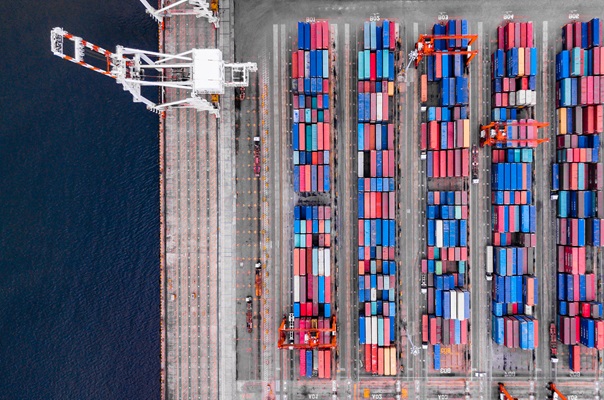.png)
Sharmila Chavaly, ex-senior civil servant, specialises in infra, project finance, and PPPs. She held key roles in railways and finance ministries.
February 27, 2025 at 2:17 PM IST
India’s electric vehicle revolution has hit a speed bump. With Budget allocations for 2025-2026 making it clear that subsidies for mass EV adoption are no longer feasible, the government’s role will likely be limited to policy nudges rather than financial handouts.
This reality demands a shift in strategy. Rather than waiting for sweeping initiatives, India must focus on targeted, high-impact areas that can deliver quick results.
One such opportunity lies in electrifying freight movement around the country’s major ports. This could significantly reduce emissions, lower logistics costs, and improve air quality in surrounding urban areas.
Globally, similar initiatives have already demonstrated success in slashing emissions near ports, offering a proven template for India to adapt. For instance, Los Angeles and Long Beach ports in the US cut NOx emissions by more than 55% over 15 years through electrified freight corridors, while Shenzhen’s push to electrify port trucks contributed to a drop in citywide transport CO2 emissions.
Mumbai and Chennai Ports are critical hubs of global trade, but they are also significant sources of pollution. Diesel-powered trucks and equipment dominate freight movement in and around these ports, contributing to the poor air quality plaguing nearby cities.
By focusing on electrifying short-haul routes, adopting battery-swapping technology, and retrofitting existing diesel trucks, India can turn these ports into models of sustainable freight movement. The benefits would be immediate: reduced emissions, lower operating costs for logistics companies, and cleaner air for millions of people.
Short-Haul Electrification
A significant portion of port-related freight movement in India occurs within a 300–500 km radius, making it an ideal candidate for electrification. Electric trucks, particularly those using battery-swapping technology, are well-suited for short-haul routes like Mumbai-Pune or Chennai-Sriperumbudur. Battery-swapping—where depleted batteries are replaced with fully charged ones in a matter of minutes—eliminates the need for large onboard batteries, reducing vehicle weight and cost.
It also enables standardised batteries to be charged during off-peak hours, optimising grid usage. While the upfront infrastructure and battery inventory costs are high, the long-term benefits far outweigh the initial investment.
Retrofitting existing diesel trucks with electric engines is another promising avenue. Though the upfront cost of retrofitting ( about ₹2–3 million per truck) is steep, it could accelerate the transition to zero-emission freight movement.
The challenge lies in developing cost-effective retrofitting kits and incentivising adoption through subsidies or policy support. Collaborations between truck manufacturers, logistics companies, and utilities will be critical to sharing costs and risks.
Corporate social responsibility funds could help bridge the gap. For instance, vehicle manufacturers such as Tata Motors, M&M, Eicher Motors and Ashok Leyland have annual CSR budgets ranging from ₹200 million to ₹1,200 million. Meanwhile, oil majors like Reliance Industries and ONGC spent more than ₹16 billion and ₹6 billion, respectively, in 2023-24. Channeling these funds into state-led retrofitting schemes—a direct fit under CSR’s environment sustainability mandate—could accelerate adoption.
The road to electrifying India’s ports won’t be without hurdles. High traffic congestion, limited space for infrastructure, and the need for grid upgrades are real challenges. But these are not insurmountable. By focusing on short-haul routes, leveraging battery-swapping technology, and investing in infrastructure, India can position its ports as vital links in an emission-free global trade system. Policy support, industry collaboration, and community engagement will be key to success.
After starting pilot projects in states such as Maharashtra and Tamil Nadu, India can create a replicable model that scales nationally. Ports like Nhava Sheva and Chennai are more than just gateways for trade—they are potential catalysts for a cleaner, greener future. Electrifying freight movement around these hubs is not just an environmental imperative; it’s an economic opportunity India cannot afford to miss. The time to act is now.




